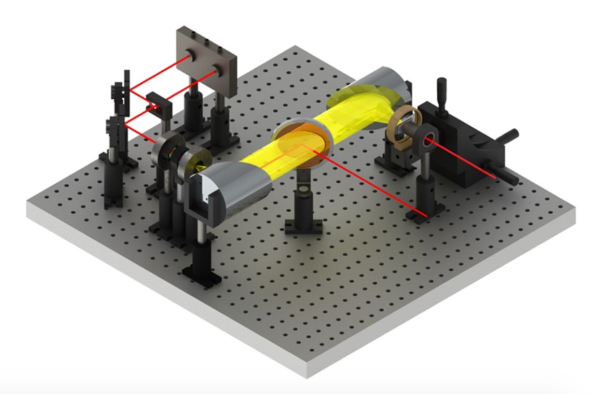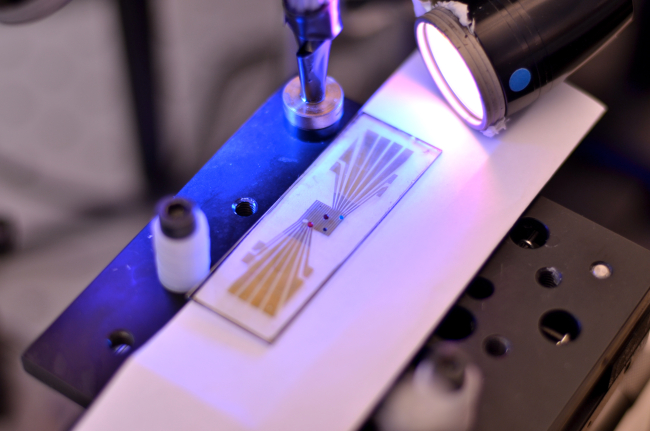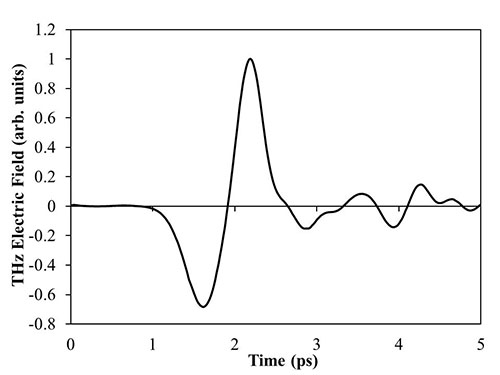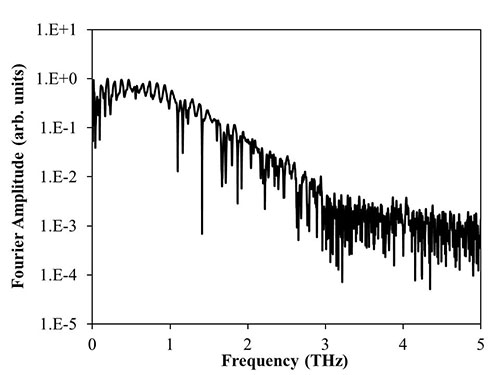Terahertz Spectroscopy
The terahertz spectrum, defined to be the spectrum between 300 GHz and 30 THz, is host to molecular resonant modes for a wide range of materials. Consequently, terahertz spectroscopy is an exciting new technique capable of detecting trace gasses and biomolecules, as well as ascertaining bulk material properties for non-destructive quality assurance. Of particular interest is the potential for terahertz spectroscopy to perform sensitive analyses of biological samples for disease and cancer detection.
To this end, the IOL is working towards developing a terahertz lab-on-a-chip device that can perform terahertz spectroscopy on fluids passing through a flow channel with the ultimate goal of fast characterization of single cell samples in the terahertz spectrum. Concurrently, the IOL is also working to characterize common biomolecules, including glucose and glycogen, in the terahertz spectrum so that their spectral signatures can be better identified in future spectroscopy systems.





